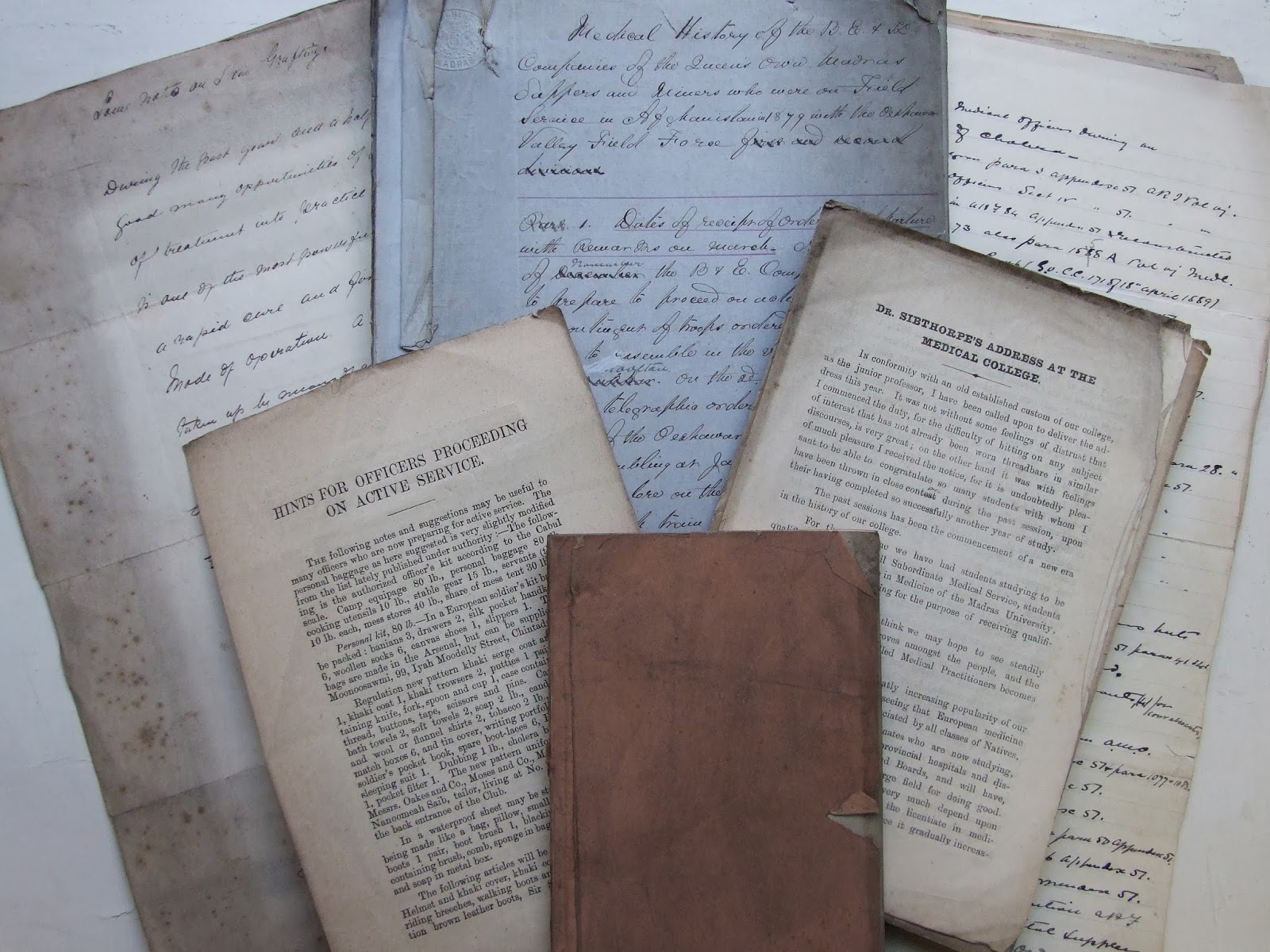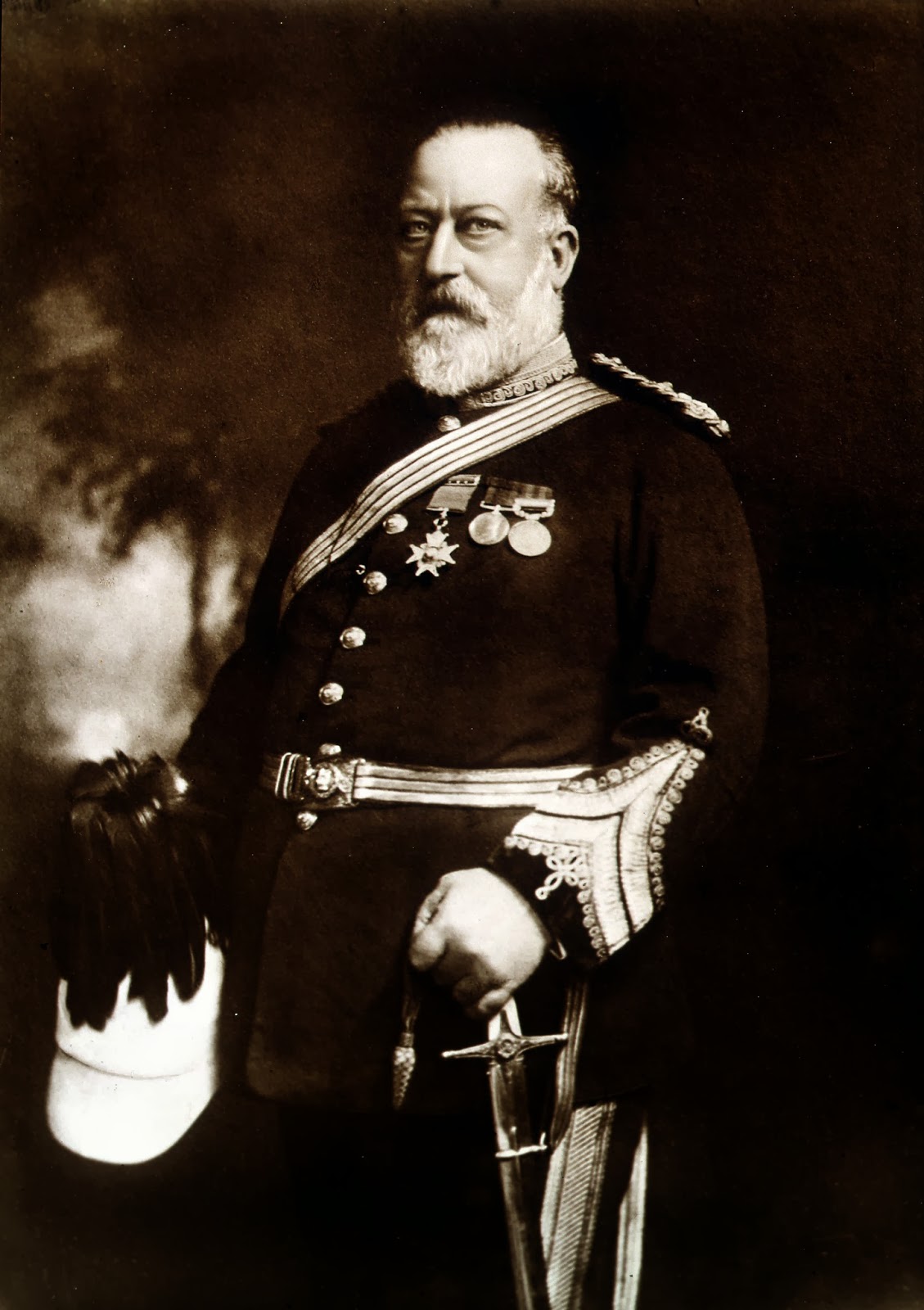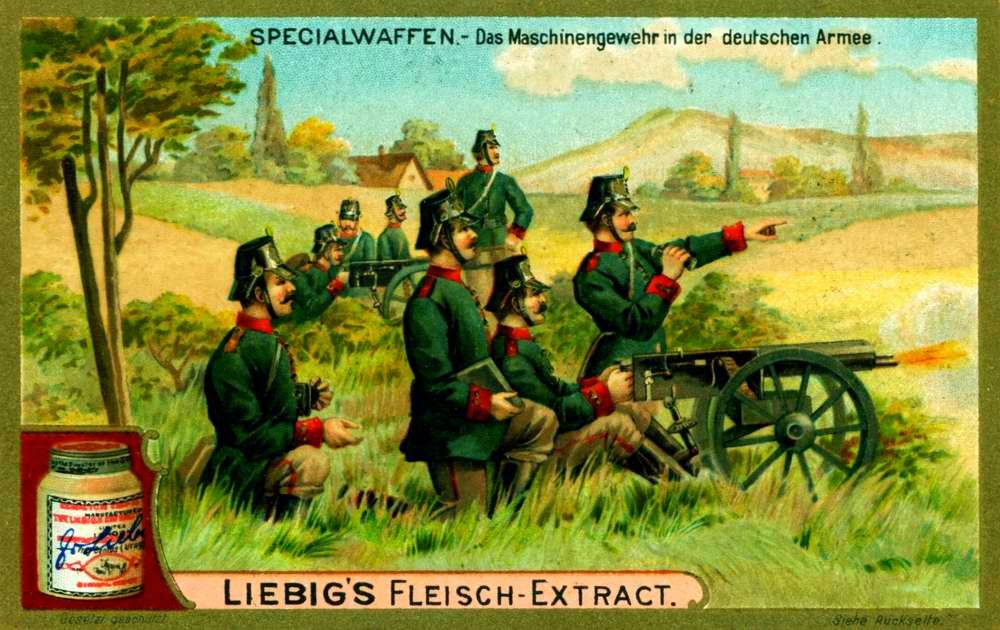Archive item of the month: Hints for Officers Proceeding on Active Service
During some recent sorting of uncatalogued
pamphlets we came across some items which had been separated from the Sibthorpe
archive collection; including some handwritten reports, printed pamphlets and
ephemera. One item which especially caught my eye was a small leaflet Hints for Officers Proceeding on Active
Service.
 |
| Some of the new Sibthorpe material |
 |
| Surgeon-General Sibthorpe |
Charles Sibthorpe was born in Dublin in 1847;
he studied medicine at the Royal College of Surgeons in Ireland and at the
Meath Hospital. In 1870 he joined the Indian Medical Service as
Assistant-Surgeon, and worked his way up through the ranks to Surgeon-General
with the Government of Madras in 1894. During his time in India he was
Superintendent of the Goal at Banda, Resident Surgeon to the General Hospital
and Professor of Pathology at the Madras Medical College, where he also held successively
the positions of Professor of Ophthalmology, Anatomy and Surgery.
On two
occasions during his time in India, Sibthorpe volunteered for active service
with the Indian Medical Service. Firstly in 1878 when he served with the
Peshawar Valley Field Forces in Afghanistan. In 1885 he transferred to active
service again, this time in Burma, where he was staff surgeon to Sir H Prendergast
the officer in command of the British forces in Upper Burma. As the leaflet of Hints is undated it is not clear which
of the two occasions it dates from.
 |
| Hints for Officers |
Hints
for Officers contains very detailed instructions on
the weight and contents of the kit authorised to be carried by each Officer in
the Indian Army. An Officer was allows 80lb of kit, which was to contain
everything from ‘new pattern khaki serge
coat and trowsers (sic)’ down to six silk handkerchiefs, a 1lb of dubbling
for waterproofing boots, a spare pipe and 6 boxes of matches. An Officer could
also have three servants each with a 10lb allowance of kit.
The leaflet expounds the praises of the
small Warren’s cooking pot as it ‘has the
great advantage, that it is just large enough for one officer’s ration. The
vegetables should be placed in the upper compartment and a little salt
sprinkled over them, the meat in the middle compartment with some more salt and
pepper; the lowest compartment should be filled with water. The vessel is then
closed and placed over a fire until one-half of the water has been changed into
steam. The rations will then be found to be well cooked, a very important
matter’. Despite these detailed cooking instructions the suggested mess
supplies are less inspiring, including Liebeg’s extract of meat (a concentrated
meat extract which was to act as a meat substitute) and Erbswurth compressed
vegetables.
 |
| Late 19th century German advertisment for Liebig's extract of meat |
As well as guidance on what an officer
needs the leaflet also contains instructions on where it can be purchased in
Madras. The new pattern uniform can be had from ‘Nanooeah Saib, tailor, living at No. 9, Patter’s Road’,
conveniently located ‘at the back
entrance of the Club’; no doubt an excellent location for attracting army
trade. ‘A carpenter, named Ramalingram,
living in Pursewakum, near the Native Infantry Lines’ is recommended as
having very good skills and plans for making camp chairs, camp cots and camp
tables, which are suggested as ‘being of
great use when carriage can be obtained’.
 |
| Madras, c.1880 |
Hints
for Officers and the other newly found Sibthorpe
items will be catalogued and added to the existing Sibthorpe collection and
will be available for researchers to consult. A detailed list of the rest of
the Sibthorpe collection including 6 casebooks from his time in India can be found here.